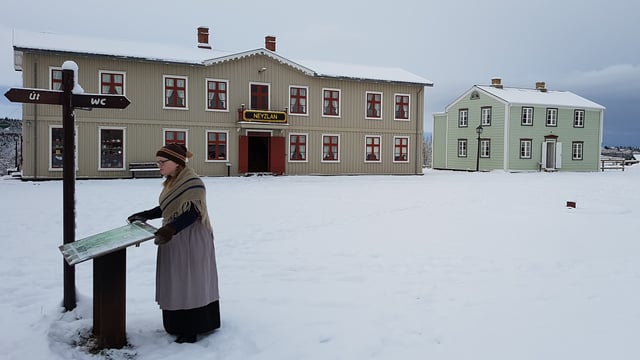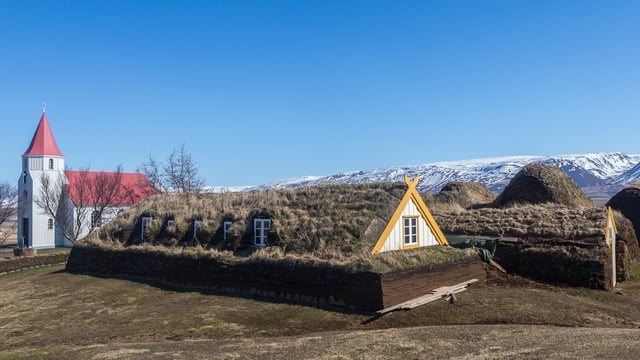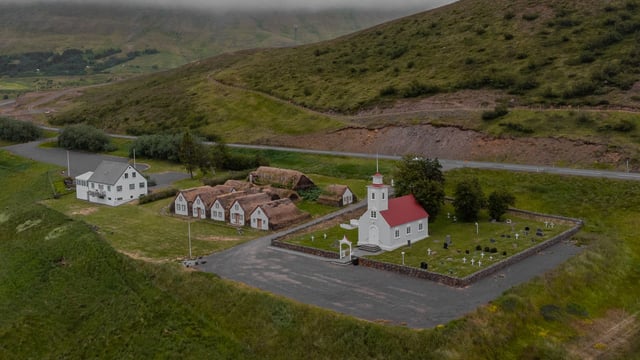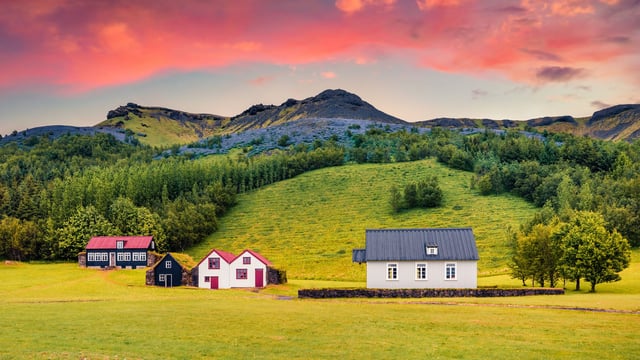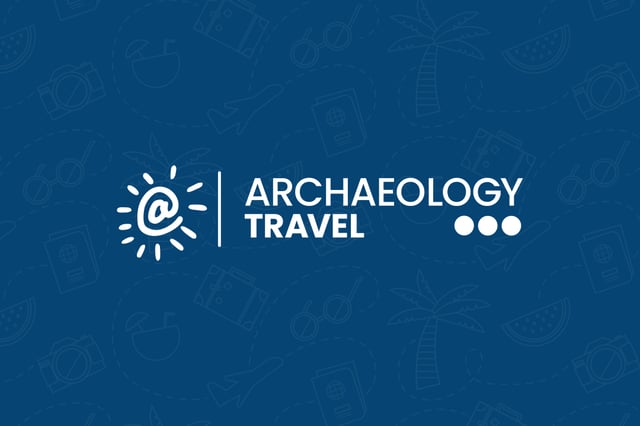Turf Houses in Iceland
Turf has been used as a building material in Europe since at least the Iron Age. Timber is used to build the structure, turf is then used to create the walls and cover the roof. This was a tradition and architectural vernacular that was brought to Iceland in the 9th century AD (see the Settlement Exhibition in Reykjavik). Traditionally, the longhouse was one large room that served all domestic functions. In time this changed, where rooms or annexes for specific functions would be added. In the early 1800s another change occurred, instead of one house with annexes smaller houses were built right up against each other. There are a number of traditional turf houses in Iceland, some of which have been restored and are now museums.
Where to See Turf Houses in Iceland
You can create your own travel lists (such as places you have been to, places you would like to visit) and an itinerary for your travels in Iceland. These can also be shared with your friends and on social media. You can see how this is done by watching our Using the Itinerary video on YouTube, or reading the Using the Itinerary page. To make use of our itinerary builder, you will need to login or register as a new user. Registering and using these features is free of charge. Follow this link to Login or Register.
To add more sites and museums to your Iceland Itinerary, see our Iceland Travel Guide.
The Settlement Exhibition, Reykjavik
In 2001 workers digging in Reykjavik city centre came across the remains of a Viking longhouse dating to the 10th century. Later excavations revealed that the building was on top of an earlier structure dated to 871 ±2 AD – making this the oldest evidence of human habitation on the island. The remarkable find has been preserved in situ, and an extraordinary multimedia exhibition using state-of-the-art interactive technologies suitable for people of all ages reveals the world of Iceland’s earliest settlers.

Árbær Open Air Museum, Reykjavík
From a 13th century farmhouse, in its original position, to a re-constructed upper class town square with its 19th and 20th century two story buildings, this open air museum explores the early history of Reykjavik. Each house has been staged with period specific artefacts, allowing visitors to see what daily life was like in Iceland for farmers, fisherman and city dwellers. One of the buildings, in which the first worker’s guild was formed, houses a permanent exhibition that charts the history and development of consumption in Reykjavik.

Eiríksstaðir - Eiriksstadir Viking Home
The Eiriksstadir Viking Home museum is a replica of a Viking turf house that was built next to the archaeological remains of the house of Eric the Red. And where his son, Leifr Eiriksson was born. From this part of Iceland the Vikings set sail westwards. Eric is thought to have been the first Viking to reach Greenland, while his son the first European to reach North America. Viking re-enactors guide visitors around the site showing them what life was like around 1,000 years ago.

Glaumbær Farm & Museum
Glaumbær is a historic church village that is now an open-air museum. People were living in the turf houses here up until 1947; the earliest evidence of human habitation is the 9th century. According to the Grænlendinga saga Snorri Þorfinnsson was one of the inhabitants. Snorri is said to be the first European to be born in North America in 11th century. Snorri built the first church in the village. The onsite museum is housed in a historic timber framed building.

Laufas Heritage Site & Museum
Earliest records of the historic site of Laufás date to the 10th century, although the buildings that make up the village today date from the mid 19th century. Including the church, which is dedicated to Saint Peter. On display in the turf houses are clothes, furniture, general household items and objects of everyday life from the 19th century. Of particular note is the church pulpit, made in 1698. One of the houses recreates the living room of an Icelandic Viking living room.

Skogar Open Air Museum
Part of the larger Skogar Museum in Iceland’s Southern Region, this open-air attraction features buildings from various periods of the island’s history. These include an early 20th century schoolhouse, the Skogar Church, and a series of traditional turf buildings once used as a farmhouse – as well as a turf house for elves! The museum houses over 15,000 artefacts, with a focus on agricultural and fishing equipment, but also collections of traditional costume and natural history specimens.

Turf House Museum
The Turf House Museum in Selfoss, Southern Region, preserves several surviving examples of a style of architecture once widespread across Iceland. These timber structures are characterised by having turf across their roofs, helping to provide a source of installation, particularly during the cold Icelandic winters. As well as the preserved houses, the museum includes an exhibition hall which discusses the architecture and history of these fascinating buildings.

Keldur Turf Houses
Keldur, a historic settlement, is the location the largest turf farm in south Iceland. Parts of the central hall are thought to be from the oldest turf house still standing in Iceland. In the 12th and 13th century the settlement was inhabited by one of the most powerful clans of the time. Hence the size, the remains of 16 to 18 houses have been recorded. Much of what we see today was built in the 19th century. One of the unique features is an underground tunnel, built sometime in the 12th or 13th centuries at a time of conflict.





